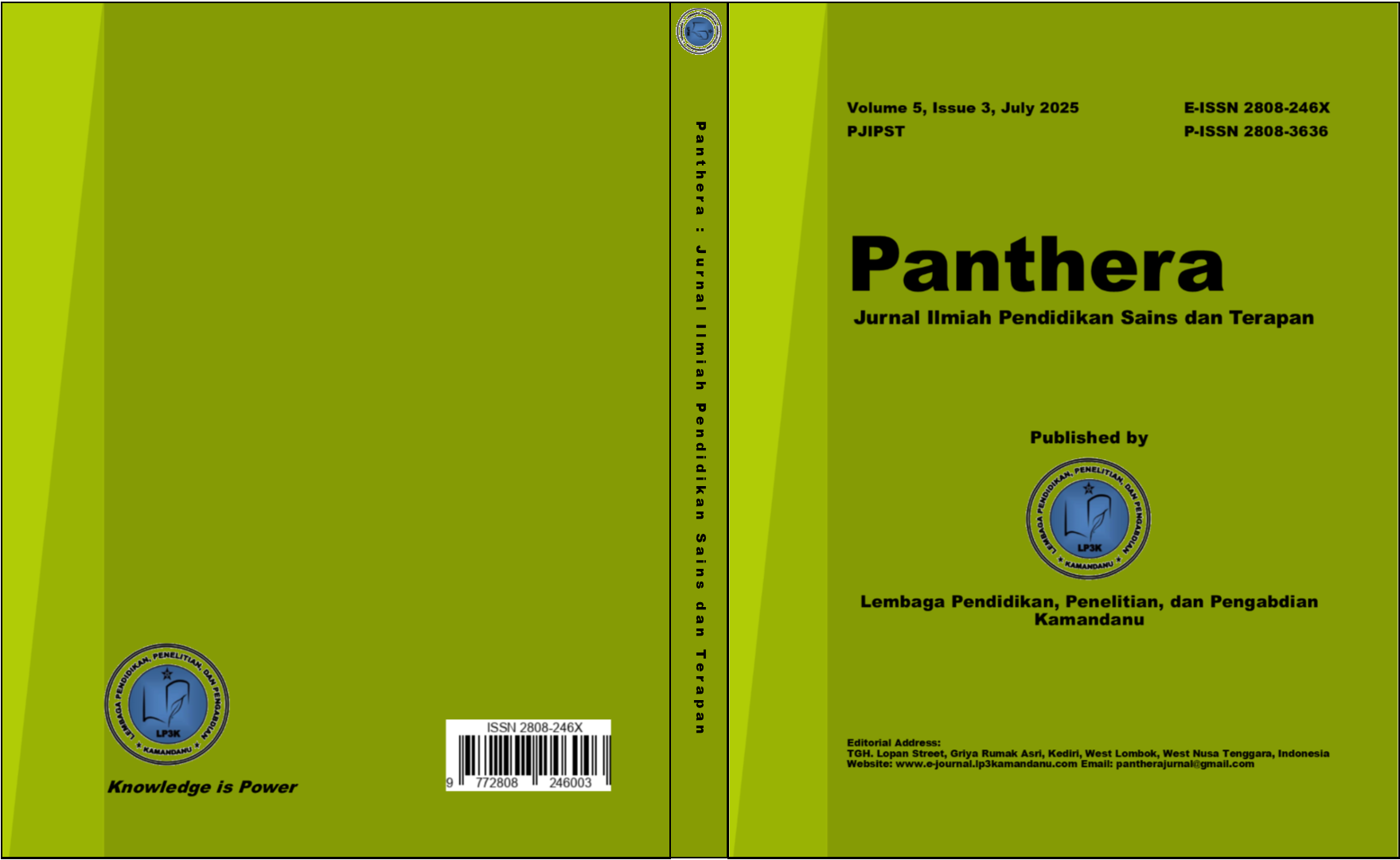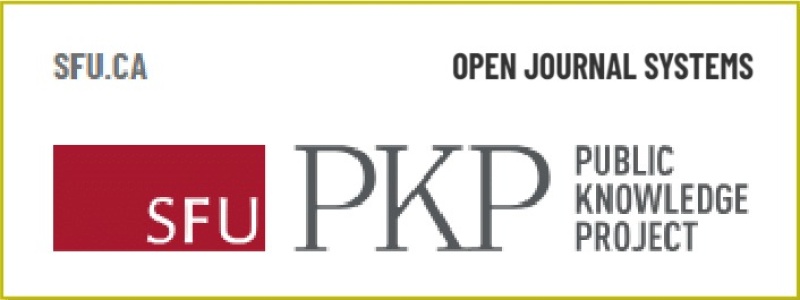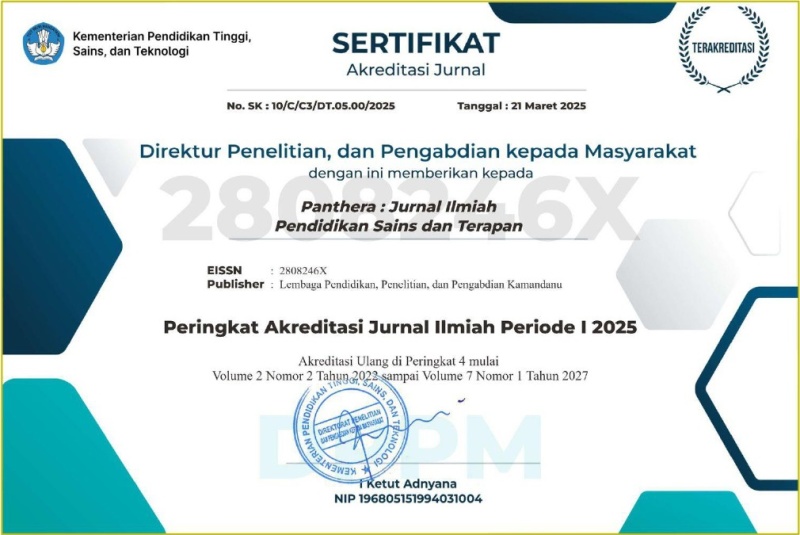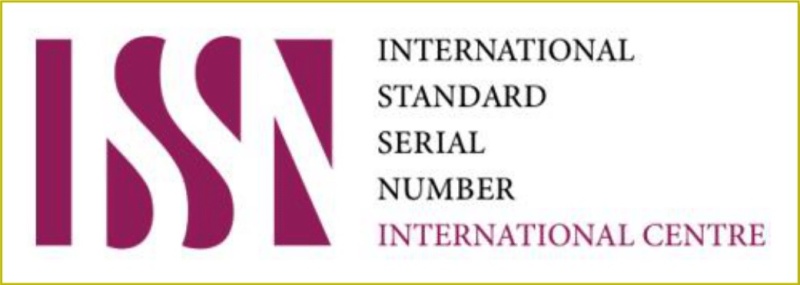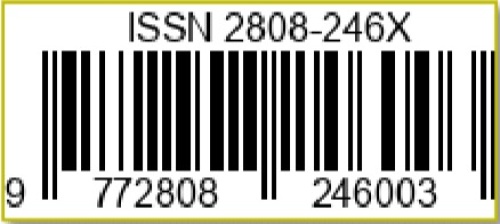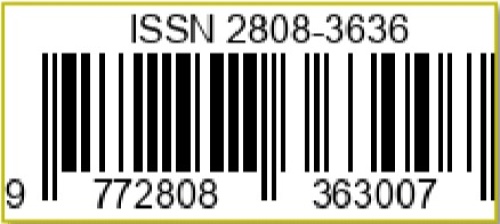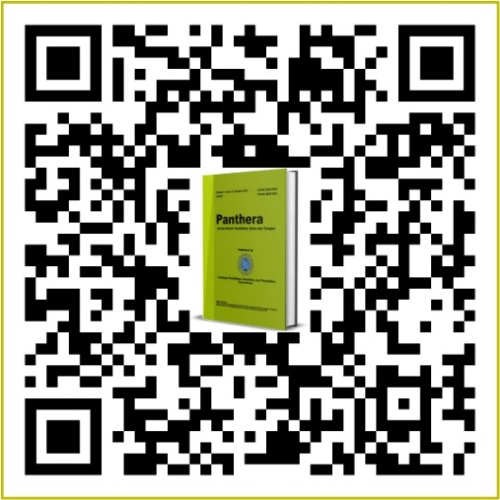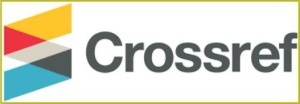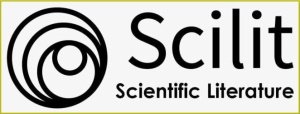Penggunaan Diksi dalam Menulis Teks Puisi Siswa Kelas VIII SMP Negeri 27 Makassar
DOI:
https://doi.org/10.36312/panthera.v5i3.540Keywords:
Text Analysis, Diction, Writing, Poetry, Junior High School StudentsAbstract
This study aims to describe the use of diction in writing poetry texts by eighth grade students of SMP Negeri 27 Makassar. This study uses qualitative descriptive. The focus of this study is to analyze data on poetry texts created by students to describe the use of diction used in their poetry. The data in this study is diction in students' poetry texts. The data sources for this study were taken from students' poetry texts. Data collection techniques were carried out through observation, assignments, and documentation. Data analysis techniques applied in this study were reduction, data presentation, and drawing conclusions. The results showed that the most dominant types of diction used were connotative diction and abstract words. Meanwhile, types of diction such as synonyms, antonyms, slang words, jargon words, and slang were almost never found. This finding indicates that students' ability to choose diction is still limited and tends towards general and emotional diction. Therefore, this study recommends the need for learning that is more focused on the variation and application of diction in writing poetry so that students are able to express their ideas and feelings more richly and creatively.
Downloads
References
Alfiani, P. (2024). Analisis Makna Konotatif dalam Puisi Siswa Kelas VIII di UPT SMP Negeri 1 Koto Kampar Hulu. Skripsi. Universitas Bosowa Makassar.
Giftia, S. H., & Sugeng, R. (2022). Penggunaan Gaya Bahasa dalam Kumpulan Puisi pada Akun Instagram Panjiramdana. Journal Sebasa, 5(2), 353-363. https://doi.org/10.29408/sbs.v5i2.6194
Hermitha, M. (2016). Pengaruh Penguasaan Diksi terhadap Keterampilan Menulis Puisi Baru pada Siswa Kelas V SDN Mangkang Wetan 02 Semarang. Thesis. Universitas Negeri Semarang.
Huda, E. R. K. (2019). Penggunaan Diksi pada Karangan Cerpen Siswa Kelas XI SMA Negeri 4 Tangerang Selatan Tahun Pelajaran 2018/2019. Skripsi. Universitas Islam Negeri Syarif Hidayatullah Jakarta.
Husnullail, M., Risnita, Jailani, M. S., & Asbui. (2024). Teknik Pemeriksaan Keabsahan Data dalam Riset lmiah. Journal Genta Mulia, 15(1), 1-23.
Nurhadi. (2017). Handbook of Writing : Panduan Lengkap Menulis. Jakarta: Bumi Aksara.
Nursalassaty., Khairunnisa, N., Yani, I., & Panjaitan, R.P. (2025). Kajian Pendekatan Struktural: Analisis Puisi “Akulah Medan” Karya Teja Purnama Lubis. Indo-MathEdu Intellectuals Journal, 6(2), 2560-2569. http://doi.org/10.54373/imeij.v6i2.2919
Nurshofa, S., Rohima, A. A., Alfarizi, A. A., & Yusup, R. (2024). Upaya Meningkatkan Hasil Menulis Siswa Kelas V pada Mata Pelajaran Bahasa Indonesia dengan Model Pembelajaran Brainstorming di SDN 1 Selajambe. Jamparing : Jurnal Akuntansi Manajemen Pariwisata dan Pembelajaran Konseling, 2(2), 550-557. https://doi.org/10.57235/jamparing.v2i2.2950
Wahyuni, S. (2018). Pengaruh Media Gambar terhadap Keterampilan Menulis Puisi Siswa Kelas VIII SMP Negeri 8 Makassar. Skripsi. Universitas Bosowa Makassar.
Wiguna, M. Z. (2020). Analisis Penggunaan Diksi dalam Naskah Pidato Siswa. Jurnal Pendidikan Bahasa, 9(1), 103-118. https://doi.org/10.31571/bahasa.v9i1.1645
Downloads
Published
How to Cite
Issue
Section
License
Copyright (c) 2025 Prety Chyntya, Usman, & Baharman

This work is licensed under a Creative Commons Attribution-ShareAlike 4.0 International License.
-
Attribution — You must give appropriate credit, provide a link to the license, and indicate if changes were made. You may do so in any reasonable manner, but not in any way that suggests the licensor endorses you or your use.
-
ShareAlike — If you remix, transform, or build upon the material, you must distribute your contributions under the same license as the original.

